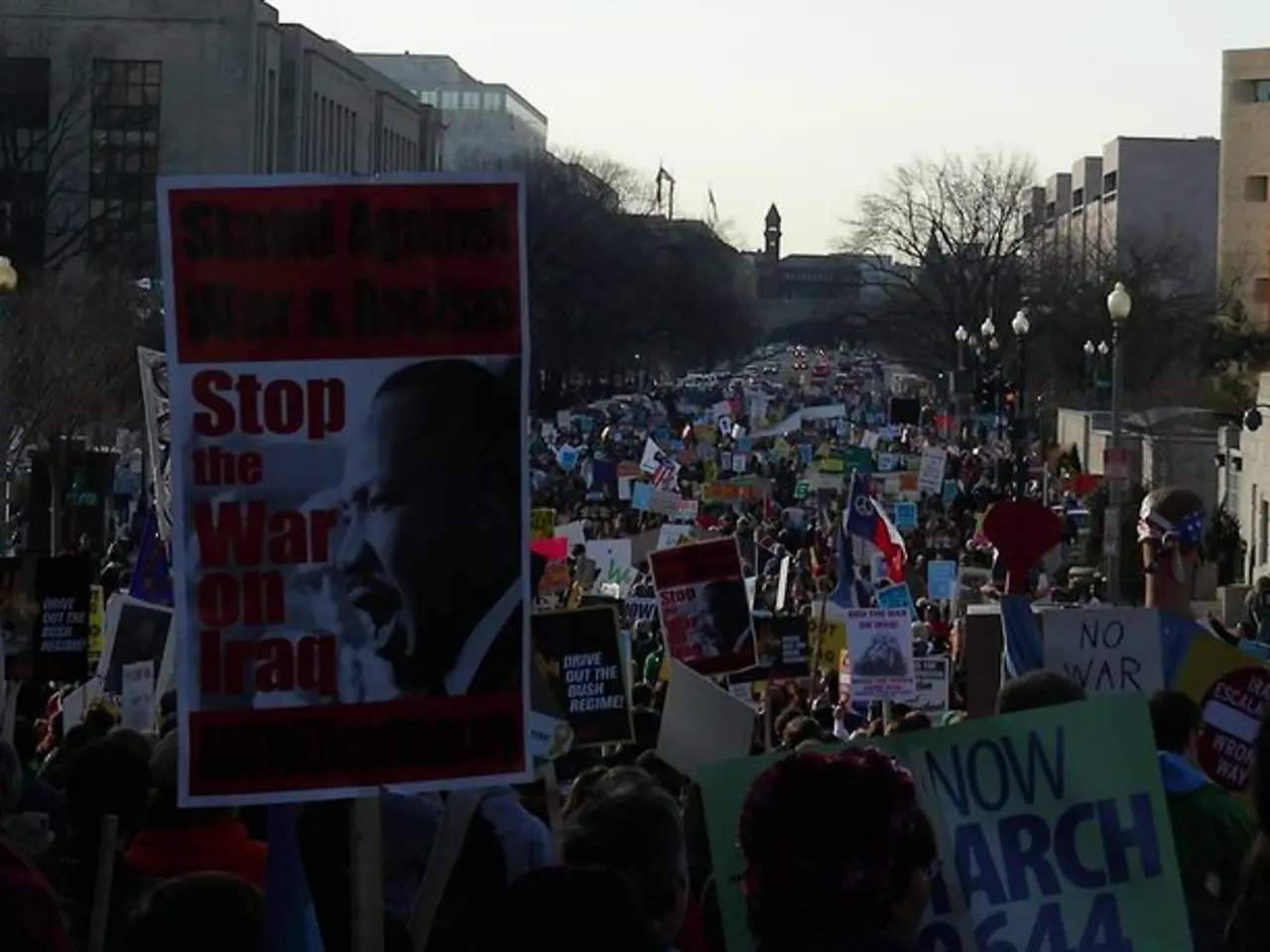Instructions for Protesters on Lawful Demonstrations
In the heart of Australia, the state of New South Wales (NSW) has been embroiled in a heated debate over its protest laws. The legislation, passed in 2022 and further expanded in 2025, imposes stringent restrictions on public demonstrations, particularly those causing disruption to major roads or facilities [1][2].
Under these laws, it is an offence to cause disruption to major roads, with penalties reaching fines up to $22,000 or imprisonment for two years [1]. The police have been granted powers to seek court orders to declare protests unlawful and to bar demonstrations near places of worship, based on broad definitions of potential disruption or safety concerns [1][2].
These powers have been put to use, with the police attempting to block protests such as the 2025 Sydney Harbour Bridge protest organized by the Palestine Action Group [1][3]. In this case, the Supreme Court ruled that peaceful protests inherently may cause disruption and upheld the right to protest, emphasizing freedom of expression and peaceful assembly under NSW law [1][3].
Despite this, human rights organizations and some political groups have criticized these laws as draconian and capable of suppressing peaceful protest [2][4]. The ongoing political debate within NSW sees some lawmakers proposing to repeal or reduce these restrictions, while others seek to maintain or further expand them to mitigate protests perceived as disruptive [2][4].
International law obligations also require NSW to uphold the right to peaceful assembly, even if protests cause some disruption, unless that disruption is disproportionate [3]. This principle was cited by Human Rights Watch urging the NSW government to facilitate rather than prohibit peaceful protests [3].
Meanwhile, resources such as the "Legal Handbook for the Victorian Coal and Gas Movement" and the "Practical Guide to Law and Protests in the Australian Capital Territory" provide valuable insights into community activism and the legal issues surrounding protests in different regions of Australia [4][5]. These guides, along with online resources like the Witness Statement Form Template available on Counteract's Action Ready website [6], serve as essential tools for organisers planning peaceful protests.
As the debate over NSW's protest laws continues, it's clear that the fundamental right to peaceful assembly remains a contentious issue, with ongoing discussions and potential reforms on the horizon [1][2][3][4].
References:
- NSW Protest Laws
- Reforming NSW Protest Laws
- Human Rights Watch
- Protest in Peril
- Fitzroy Legal Service
- Counteract Action Ready
- Activists in New South Wales (NSW) are organising protests against the restrictive protest laws that have prohibited peaceful assembly, causing concerns about social change and freedom of expression.
- The ongoing debate over the NSW protest laws has led to calls for education and self-development among activists, with resources like the Legal Handbook for the Victorian Coal and Gas Movement and the Practical Guide to Law and Protests in the Australian Capital Territory serving as essential tools for organisers.
- Despite the Supreme Court's decision to uphold the right to peaceful protest in NSW, the strict legislative measures have sparked criticism, with human rights organisations labelling them as draconian and capable of suppressing activism.
- Protests and activism in NSW have not only focused on specific issues but also prioritise personal growth and learning, with participants engaging in discussions and education around social change and community development.




